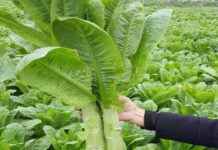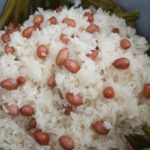A common challenge for novice agar agar makers is water separation when cooked with fruit or layer separation when creating layered treats. Let’s ensure you’re on the right track by following these crucial steps.
1 Agar Agar and Water Ratio
Water separation often occurs when you use an excessive amount of water in the cooking process:
– Crispy agar agar: While the standard ratio is 50g of agar agar powder to 2.5 liters of water, experience suggests that reducing the water quantity to 1.5 liters helps prevent the final product from crumbling.
– Chewy agar agar: Adjust the water content (600ml, 800ml, 1 liter, 1.5 liters, 2 liters, etc.) to achieve your desired level of chewiness. As a rule of thumb, use 10g of agar agar powder per liter of water.
– When incorporating other liquids such as milk, coffee, fruit juice, or coconut milk, decrease the water quantity accordingly.
For a more comprehensive guide:

2 Acidity
While many people enjoy a tangy treat, adding too much sour fruit to your agar agar can lead to water separation. It’s crucial to strike a balance between sweetness and acidity to avoid an overly sweet or sour dessert.
Notably, both sweet and sour fruits contain vitamin C, which can contribute to water separation. To counteract this, gently soak the fruit in sugar before juicing to tame the tartness.
For a visual guide:

3 Cooking Notes
1. Water separation is likely to occur if you merely stir the agar agar into cold water before cooking. Thus, it’s essential to follow the specific cooking instructions for each type of agar agar:
– Crispy agar agar: Soak the powder in cold water for 30-45 minutes. Give it a quick stir immediately after adding the powder, and then place it on the stove to cook.
– Chewy agar agar: Bring the water to a boil, reduce the heat, and gradually add the agar agar powder while stirring gently until it dissolves. This technique results in a chewier and more flavorful treat.
For a detailed guide, refer to:

2. Only introduce ingredients like coconut milk, milk, or coffee once the agar agar powder has fully dissolved. Mix vigorously, then remove from heat and pour into a mold. Adding these ingredients too early may cause layer separation.
3. When crafting layered agar agar, avoid waiting for the previous layer to set completely before pouring the next one. For the best adhesion, wait until the previous layer is slightly set and still warm before adding the next layer.
With these tips in mind, you’re all set to create delicious agar agar treats for your family, sans the store-bought options. Happy cooking!
The Ultimate Guide to Cleaning a Pig’s Stomach: A Simple Yet Effective Method!
The art of preparing pork stomach for culinary delights is a delicate process that demands attention to detail. It is imperative to meticulously clean and prepare the stomach to eliminate any unpleasant odors that may linger. This crucial step ensures that the final dish is not only tasty but also free from any undesirable smells that could ruin the dining experience.
Mastering the Art of Rice Cooking: Unveiling the Ultimate Method for Delicious Sticky Rice
Mastering the art of cooking sticky rice to perfection is a culinary quest many embark on. But the million-dollar question is, which method reigns supreme? Should you use a rice cooker, pressure cooker, or steamer? Each technique has its pros and cons, and understanding them is key to unlocking the door to delicious rice.




































